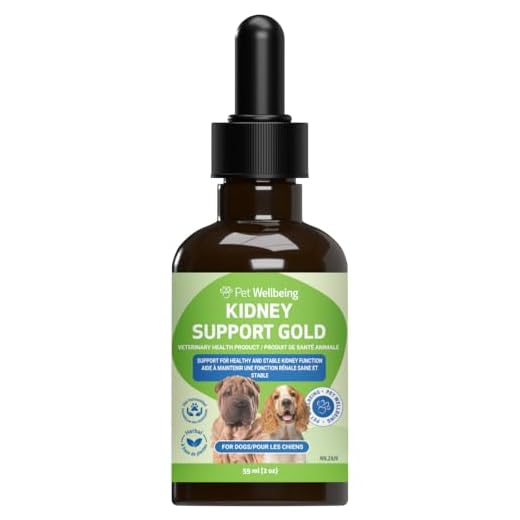




As a pet owner, I’ve often found myself puzzled by the unexpected shifts in my furry friend’s dining habits. One day, their bowl is empty within minutes, and the next, they barely give it a sniff. This sudden disinterest can be concerning, leaving me wondering what might be causing such a drastic change.
It’s essential to explore various factors that could be influencing this behavior. Just like us, our four-legged companions can experience changes in their routines or environments that impact their eating patterns. From subtle shifts in their daily life to more significant health concerns, many elements can play a role in altering their appetite.
Behavioral and environmental changes are often the first areas to examine. Have there been any recent modifications in their surroundings or daily schedule? Pets can be quite sensitive to alterations in their environment, which might affect their interest in meals. Additionally, emotional well-being can greatly influence their eating habits. Stress, anxiety, or even boredom might be underlying factors that need to be addressed.
Common Health Issues Affecting Appetite
There are several health conditions that can lead to a reduced desire to eat in pets. Understanding these conditions can help in identifying and addressing the root cause of the issue, ensuring our furry companions remain healthy and happy. Below, I’ll outline some of the most common health problems that can influence a pet’s eating habits.
Gastrointestinal Problems
Issues within the digestive system are a frequent culprit when it comes to decreased appetite. These can range from mild irritations to severe conditions. Symptoms might include vomiting, diarrhea, or general discomfort. When the stomach or intestines are affected, pets may shy away from food due to nausea or pain.
Dental Disease
Oral health is crucial for maintaining a good appetite. Painful conditions like gingivitis, broken teeth, or oral infections can make eating an uncomfortable experience. Pets with dental problems might drop food, chew on one side of their mouth, or avoid hard foods altogether.
| Health Issue | Symptoms | Possible Treatments |
|---|---|---|
| Gastrointestinal Problems | Vomiting, diarrhea, abdominal pain | Diet changes, medication, veterinary consultation |
| Dental Disease | Dropping food, bad breath, reluctance to chew | Dental cleaning, tooth extraction, pain relief |
| Kidney Disease | Increased thirst, frequent urination, weight loss | Special diet, medication, fluid therapy |
| Liver Disease | Jaundice, lethargy, vomiting | Medication, dietary adjustments, supportive care |
| Infections | Fever, lethargy, localized pain | Antibiotics, supportive care, rest |
It’s important to consult with a veterinarian if there are concerns about a pet’s reduced appetite. Early diagnosis and treatment of these common health issues can make a significant difference in their quality of life.
Behavioral Changes That Impact Eating
In this section, I will explore various shifts in behavior that can affect an animal’s willingness to consume its meals. These changes often signal underlying issues that need to be addressed to ensure the well-being of our furry companions.
Stress and Anxiety
Stress and anxiety can significantly alter an animal’s desire to eat. Various factors such as a new environment, loud noises, or changes in routine can contribute to heightened stress levels. When our pets feel anxious, their appetite may decrease as a result of the physiological effects of stress on the body.
Change in Environment or Routine
Animals thrive on consistency and predictability. Any sudden change in their environment or daily routine can cause confusion and discomfort, leading to a decreased interest in their meals. This might include moving to a new home, a new addition to the family, or even a change in their feeding schedule.
Attention-Seeking Behavior is another reason for a shift in eating habits. Pets quickly learn that not eating can result in increased attention from their owners. If they feel neglected or desire more interaction, they might deliberately skip meals to elicit a response from us.
Social Dynamics within a household can also play a role. The presence of other pets can influence eating habits, especially if there is competition for resources or if the pet feels intimidated by others. Ensuring a calm and safe eating environment is crucial for maintaining a healthy appetite.
Understanding these behavioral factors is essential in addressing changes in our pets’ eating patterns. By recognizing the underlying causes, we can take appropriate steps to help our companions feel more comfortable and secure, thereby promoting better eating habits.
Dietary Preferences and Food Aversion
When a pet suddenly shows a disinterest in their usual meals, it can be concerning for any owner. I understand that changes in dietary habits might stem from a variety of factors, including evolving tastes or an aversion to specific ingredients. This section will explore how these preferences and aversions develop and what can be done to address them.
Understanding Evolving Tastes
Just like humans, our furry friends can develop new tastes and may lose interest in what they once enjoyed. Over time, they might prefer different textures, flavors, or even the temperature of their meals. Observing these shifts and being willing to experiment with various options can help maintain their enthusiasm for mealtime.
Identifying and Addressing Aversion
On the other hand, aversion to certain foods can develop due to negative experiences or associations. For instance, if an animal associates a particular food with feeling unwell, they may avoid it in the future. Paying close attention to their reactions and possibly consulting with a veterinarian can provide insights into these aversions, allowing us to adjust their diet accordingly and ensure their nutritional needs are met.
Environmental Factors Influencing Feeding Habits
Understanding the environment’s impact on our pets’ nutrition is crucial. Often, subtle changes in their surroundings can significantly alter their appetite and mealtime behavior. In this section, I will explore how various external elements can affect their consumption patterns and overall well-being.
One of the most significant factors is routine disruption. Pets thrive on consistency, and any deviation from their usual schedule, such as a change in feeding times or a new addition to the household, can lead to decreased interest in meals. Maintaining a steady routine helps in providing a sense of security and predictability, which is essential for a healthy appetite.
Another critical element is the feeding environment. The location where pets eat can greatly influence their comfort levels. A quiet, comfortable, and familiar space encourages better eating habits, whereas a noisy or stressful environment can make them hesitant to approach their food. It’s important to create a calm and pleasant feeding area free from potential disturbances.
Additionally, seasonal changes can play a role in how much our pets consume. During warmer months, they might eat less due to decreased energy needs, while colder weather might increase their appetite. Monitoring and adjusting portions based on the seasons can help maintain their health and prevent over or underfeeding.
Finally, the presence of other pets or individuals during mealtime can impact their willingness to eat. Some pets may feel intimidated or distracted, leading to reduced consumption. Ensuring that each pet has its own space and time to eat without competition or interference can foster a better eating experience.
By paying attention to these environmental factors, we can better support our pets’ nutritional needs and promote healthier eating habits. Making small adjustments to their surroundings can make a significant difference in their overall appetite and health.
When to Consult a Veterinarian
As a pet owner, it can be distressing when our furry companions display unusual behavior, especially regarding their eating habits. Understanding when to seek professional help is crucial for ensuring the well-being of our beloved pets. In this section, I’ll outline some key indicators that suggest it might be time to make an appointment with a veterinary specialist.
Noticeable Physical Changes
If you observe any significant alterations in your pet’s physical condition, such as weight loss, lethargy, or changes in coat quality, it’s important to take these signs seriously. These could be symptoms of underlying health issues that require professional diagnosis and treatment. Always keep an eye on your pet’s overall appearance and energy levels to catch any worrying trends early.
Behavioral Shifts
Changes in behavior, such as increased irritability, hiding, or showing disinterest in activities they once enjoyed, can be a signal that something is amiss. While occasional fluctuations in mood are normal, persistent changes often indicate a deeper issue. Consulting with a veterinarian can help identify the root cause and provide appropriate interventions.
In summary, being attentive to both physical and behavioral changes in your pet can make a significant difference in their health. When in doubt, it’s always better to err on the side of caution and seek veterinary advice to ensure your pet remains happy and healthy.








